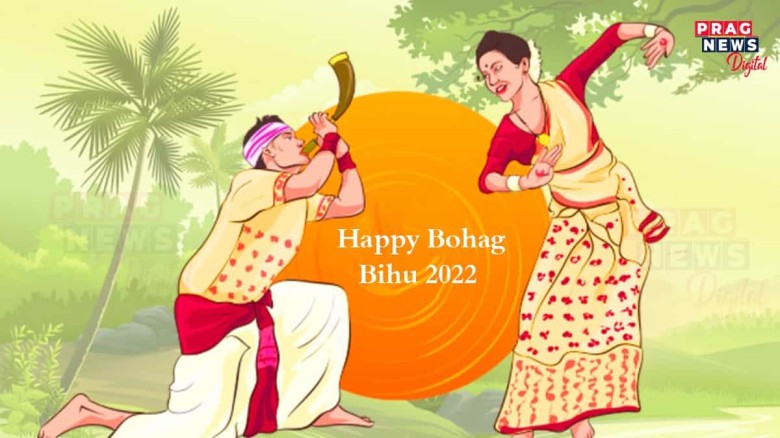Rongali Bihu, also known as Bohag (since it falls in the Assamese month of Bohag or Baisakh), occurs in mid-April (14-15 April) and celebrates the beginning of the Hindu calendar's Assamese New Year.
Digital Desk: One of Assam's three Bihu, Bohag or Rongali Bihu, is one of the most important celebrations for the Assamese community.
Rongali Bihu, also known as Bohag (since it falls in the Assamese month of Bohag or Baisakh), occurs in mid-April (14-15 April) and celebrates the beginning of the Hindu calendar's Assamese New Year. It's all about partying, wearing new clothes, and welcoming the Assamese new year with Bihu songs, dance, and cultural performances in Bihu functions. Hundreds of people attend to take part in cultural activities.
During the Bihu days, ladies adorn themselves with traditional pat, or muga silk mekhela chadors (the two-piece attire) and men mostly wear dhoti and churiya (two-piece attire). During this season, parents buy new clothes for their children. Gamocha, the traditional Assamese towel, also known as Bihuwaan, is exchanged as a show of devotion and respect. Gamusas or gamochas are normally made of cotton with red motifs and woven on a handloom, but during the Bohag Bihu festival, gamochas are also produced out of pat or muga silk.
Moreover, on the day of Bohag Bihu, folks rise early and apply a turmeric-urad daal paste on the body. It is thought to aid in the removal of negativity and promote purity. After that, folks change into fresh clothes and visit their friends and relatives.
Rongali is known for its colour, merrymaking, and festivity. As a response, individuals on Bihu have a good time, forgetting about their difficulties and enjoying life.
Duck meat cooked with white gourd, mutton, chicken, fish, and green leafy vegetable are the specialties among the vegetarian and non-vegetarian foods traditionally served at Bihu lunch and dinner. The most famous is masor Tenga, or thekera Tenga, a sour fish curry made with tomato and lemon juice.
One of the main attractions of this celebration is women applying "jetuka" (mehndi or henna) on their hands and creating intricate designs.
Under different names, the festival is also celebrated in Bengal, Manipur, Punjab, Nepal, Orissa, Kerala, and Tamil Nadu.
Notably, several Bihu organisations and committees enthusiastically organised the event with celebrity artists, mostly from Assam.

Leave A Comment